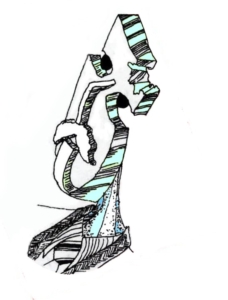Örgənmək
1. sound-signify
Örgənmək: (verb) to learn
Sound-signify:
prominent form/type [–]:
vectorial tendency [ö]: (relative to) the depth/core of ‘dir’ [essence]
function [r]: dynamic, active, motional
[g]: (of) passing-motional nature
[vowel+n]: self-transitive
Sound-signify version: ([do the act] relative to the depth/core of ‘dir’ [essence]) + ([functionally] active) + (of passing-motional type) + (self-transitively)
Semantic interpretation: ([to] do self-transitively the active/dynamic job of passing-motional nature relative to the depth of essence)
Plain : ([to] do self-transitively make [some point] deeply)
Örgətmək: (verb) to teach
Sound-signify:
prominent form/type [–]:
vectorial tendency [ö]: (relative to) the depth/core of ‘dir’ [essence]
function [r]: dynamic, active, motional
[g]: (of) passing-motional nature
[vowel+t]: definite other-transitive
Sound-signify version: ([do the act] relative to the depth/core of ‘dir’ [essence]) + ([functionally] active) + (of passing-motional type) + (other-transitively)
Semantic interpretation: ([to] do other-transitively the active/dynamic job of passing-motional nature relative to the depth of essence)
Plain : ([to] do other-transitively make [some point] deeply)
background
Ör– and Öz are from the same origin. The reality of this origin is illustrated best with the graphic figures in so-called Arabic alphabet as: ر (r) and ز (z); (The same shape, without a dot resembles dynamicity while with a dot resembles staticity, ceasing dynamicity, stability, fixedness. Seemingly the dot has got some fixing function.)
See: öz


